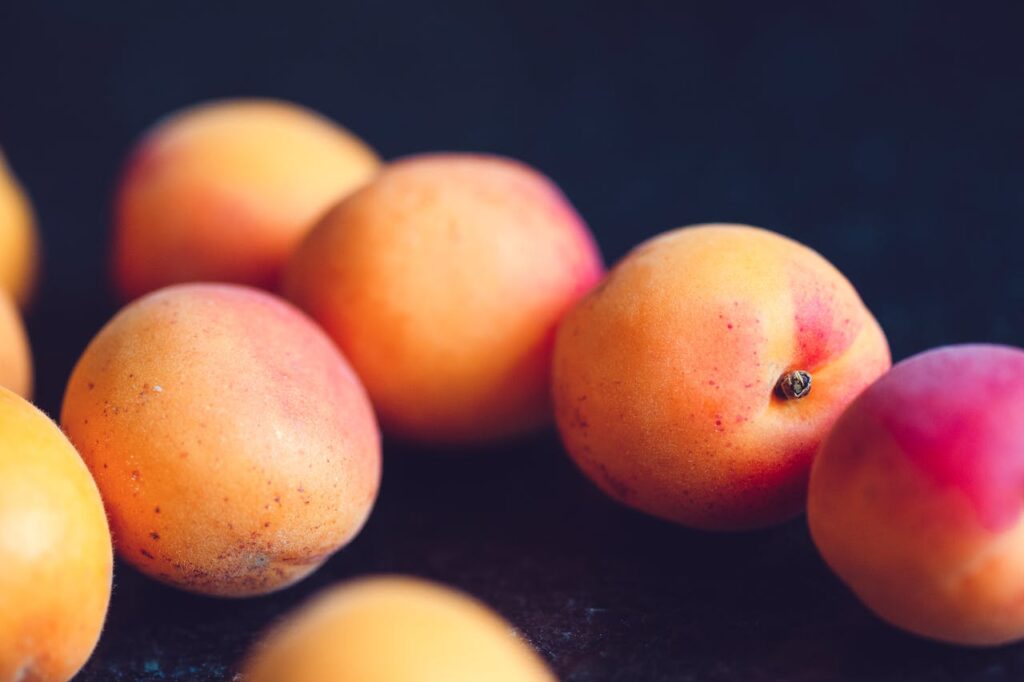Malic acid is a natural compound found in many fruits, including apples, that plays an essential role in energy production, regulating food acidity, and improving cosmetic formulations. This article explores its properties, uses, and the importance of laboratory analysis to ensure the safety and quality of food and cosmetic products. Discover how this acid is central to biochemical processes and modern industries.
Introduction to Malic Acid
What is malic acid?
Malic acid is a dicarboxylic acid naturally found in many fruits and vegetables, particularly green apples, apricots, and cherries. It belongs to the alpha hydroxy acid (AHA) family, a class of compounds widely used for their exfoliating properties in cosmetic products.
The molecular formula of malic acid is C₄H₆O₅, and it exists in two enantiomeric forms: L and D. In nature, the L enantiomer is predominantly present.
Malic acid contributes to the tart flavor of unripe fruit and is often responsible for the sour taste of green apples. In addition to occurring naturally in food, it is also produced by the human body during energy metabolism.
Origin and discovery
Malic acid was first isolated by Swedish chemist Carl Wilhelm Scheele in 1785 from the juice of unripe apples. It was later named by Antoine Lavoisier in 1787, who chose the term “malic” from the Latin word malum , meaning “apple.” Since then, malic acid has been widely studied due to its central role in energy metabolism and its many applications in the food and cosmetic industries.
Chemical structure and characteristics
Malic acid is an alpha-hydroxy acid, meaning it has both hydroxyl (-OH) and carboxyl (-COOH) groups. This gives it important properties in biochemical reactions, such as its ability to act as an intermediary in cellular metabolism.
In the human body, malic acid is a key component of the Krebs cycle, also known as the citric acid cycle. This cycle is fundamental to aerobic cellular respiration and plays a vital role in converting nutrients into usable energy for cells.
Role in energy metabolism
Malic acid plays a crucial role in energy metabolism, particularly in the Krebs cycle, which takes place in the mitochondria of cells. During this cycle, malic acid is converted into oxaloacetate by an enzyme called malate dehydrogenase. This reaction regenerates oxaloacetate, a molecule essential for the continuity of the cycle and the production of ATP, the main energy source for cells.
Insufficient levels of malic acid can disrupt this cycle, leading to fatigue and decreased physical performance. Therefore, malic acid is often recommended as a supplement to help improve energy production, particularly in people suffering from chronic fatigue.
Industrial use and applications
Malic acid is commonly used in the food industry as a food additive under the number E296. It is added to foods and beverages to improve taste, particularly in confectionery and soft drinks. Due to its tangy flavor, it is used to balance the acidity in food products, while providing a cooling sensation.
In the cosmetics industry, malic acid is used for its exfoliating properties. It is often included in creams and lotions designed to smooth the skin and improve its texture. Malic acid is also recognized for its benefits in oral care, as it stimulates saliva production, which helps prevent plaque formation and reduces the growth of harmful bacteria.
Importance in laboratory analyses
Specialized laboratories, such as YesWeLab's partners, regularly conduct tests to assess the concentration of malic acid in food and cosmetic products. These analyses verify product compliance with food safety standards (INCO regulations, FDA standards) and ensure their quality. In the food industry, these tests are also used to measure the malic acid content of beverages such as ciders and wines, where this acid plays a role in flavor balance.
Laboratories also perform migration tests to ensure that food contact materials, such as plastic packaging, do not transfer malic acid or other harmful substances to food.

What is the role of malic acid?
Biochemical role in the Krebs cycle
Malic acid plays a central role in the Krebs cycle , a metabolic process fundamental to cellular respiration. This cycle, also called the citric acid cycle, takes place in the mitochondria, where energy is produced from absorbed nutrients. Malic acid is converted to oxaloacetate by the enzyme malate dehydrogenase, which keeps the cycle running and produces adenosine triphosphate (ATP), the primary energy source for cells.
This conversion is essential for aerobic energy production, particularly in muscles and tissues with high energy demands, such as the heart and brain. A deficiency of malic acid in this process can lead to reduced ATP production, leading to feelings of fatigue and decreased physical performance. This explains why malic acid is often included in dietary supplements designed to increase energy and vitality.
Role in photosynthesis
In plants, malic acid plays an equally crucial role. It is involved in photosynthesis , the process by which plants convert light into chemical energy. Specifically, in C4 plants, such as corn and sugarcane, malic acid is involved in capturing and transporting carbon dioxide to chloroplasts, where it is used to produce carbohydrates. This mechanism makes C4 plants particularly efficient at growing in conditions of heat and intense light, while limiting water loss.
Malic acid's role in photosynthesis is also essential for ecological balance, as it contributes to carbon fixation, a key process in regulating the concentration of CO₂ in the atmosphere.
Use in malolactic fermentation
Malic acid also plays a major role in oenology, particularly in the malolactic fermentation used for wine production. This process transforms malic acid, which is quite acidic and gives wine a pungent taste, into lactic acid, which is much milder. This chemical change reduces the overall acidity of the wine, while improving its roundness and stability.
Wine laboratories measure the concentration of malic acid in wine to ensure optimal fermentation.
This analysis is essential to determine when fermentation is complete and to ensure the quality of the final product. In some red and white wines, mastering this process is essential to achieve a balanced taste and good wine preservation.
Are you looking for an analysis?

Where to find malic acid?
Natural presence in fruits and vegetables
Malic acid is naturally present in many fruits and vegetables, especially those with a tangy taste. Foods richest in malic acid include:
- Green Apples : Apples are often considered the best-known and richest source of malic acid. This compound is responsible for the characteristic tart flavor of unripe apples.
- Apricots and plums : These stone fruits also contain significant amounts of malic acid, especially when they are still unripe.
- Rhubarb : Known for its very sour taste, rhubarb is one of the vegetables that contains the most malic acid.
- Grapes : Malic acid is present in grape juice, but its concentration decreases as the fruit ripens, especially during winemaking.
- Cherries, pears, peaches, pineapples, and currants : These fruits also contain notable amounts of malic acid, which contributes to their tangy taste.
Malic acid is also present in smaller amounts in other fruits and vegetables, such as tomatoes and berries. However, its concentration varies depending on the degree of ripeness of the food.
Impact of maturation and transport processes
The malic acid concentration in fruits and vegetables varies as they ripen. When fruits are unripe, the malic acid content is high, giving them a tart taste. As fruits ripen, this concentration decreases, making them sweeter. For example, an unripe green apple is much more tart than a ripe one.
Additionally, transportation and storage can affect the amount of malic acid present in fruits and vegetables. Modern transportation methods, which slow down the ripening process to extend the shelf life of foods, can sometimes decrease the concentration of this compound. Therefore, fresh, seasonal fruits will often have a higher malic acid content than fruits stored for a long period.
Malic Acid Supplements
Although malic acid occurs naturally in foods, it is also available as a dietary supplement . These supplements are often used by people suffering from chronic fatigue, fibromyalgia, or muscle pain. Due to its role in energy production via the Krebs cycle, malic acid is considered beneficial in supporting energy metabolism.
Supplements are typically taken in capsule, tablet, or powder form, and can be combined with other nutrients, such as magnesium, to enhance their effects on muscle health and energy.

Fortified food and beverage products
Malic acid is also added to many food and beverage products, particularly those seeking to balance flavors or extend shelf life. As a food additive under the code E296 , it is used for:
- Confectionery and Sweets : Malic acid is often added to accentuate the tart flavor of sweets, especially in sour candies.
- Soft drinks : It is used to enhance the flavor and balance the acidity of fruit juices, sodas, and energy drinks.
- Wines and ciders : In alcoholic beverages, malic acid plays a role in fermentation and helps balance the final taste of the product.
Laboratory tests on malic acid
Analytical procedures: techniques for measuring the concentration of malic acid in food and cosmetic products
Malic acid is a compound commonly analyzed in laboratories, particularly in the food and cosmetics industries. Several analytical techniques are used to measure its concentration in different products, including:
- High-performance liquid chromatography (HPLC) : This method is highly accurate and can be used to quantify the presence of malic acid in food products, such as wines, jams, or candies, as well as in cosmetics. HPLC is particularly useful for ensuring that malic acid levels meet safety standards.
- Spectrophotometry : By analyzing the absorption of light by a solution containing malic acid, laboratories can estimate the concentration of this acid in various samples.
- Acid-base titration : A more traditional technique, but still used, it allows the quantity of malic acid in food solutions to be determined according to their pH.
These methods not only ensure that food and cosmetic products comply with quality standards, but also optimize their taste or functional characteristics.
Importance of regulatory compliance testing (ISO 17025, COFRAC standards)
Laboratories must carry out their analyses in compliance with international standards and certifications, such as ISO 17025 , which establishes general requirements for the competence of calibration and testing laboratories. In France, COFRAC- ensure strict compliance with European standards, ensuring that the results obtained during tests are reliable and valid.
In the context of malic acid, compliance testing is essential for:
- Ensuring food safety : Malic acid levels must be measured and controlled to comply with legal limits established by food regulations.
- Validate cosmetic products : Cosmetics containing malic acid must meet safety criteria, particularly regarding the concentration of alpha-hydroxy acids, to avoid adverse effects on the skin.
Migration tests for materials in contact with foodstuffs (EC Regulation No. 1935/2004, FDA standards)
Migration testing is essential to ensure that food contact materials, such as packaging, do not release toxic substances into food. These tests assess the amount of malic acid (and other substances) that could migrate from packaging into the food.
In accordance with EC Regulation No. 1935/2004 , these tests ensure that the materials used for food packaging are safe for the consumer and do not alter the organoleptic properties of the food. The tests must also comply with FDA (Food and Drug Administration) standards for products intended for the US market.
Rheological tests: analysis of the fluidity and texture of food products containing malic acid
Malic acid also influences the physical properties of food products, including their texture and flowability. Rheological tests measure these properties in products such as sauces, juices, or creams. By examining how a product behaves under stress (such as spreading or flow), laboratories can adjust formulations to improve the product's texture or stability.
These analyses are crucial for:
- Optimize the texture of food products : Malic acid can modify the consistency of products, thus improving the sensory experience.
- Ensuring the stability of formulations : In cosmetics, for example, malic acid can help stabilize certain emulsions or creams.
Conclusion
Malic acid is a compound with multiple benefits, whether in food, healthcare, or the cosmetics industry. It plays a crucial role in energy metabolism, regulating acidity in foods and beverages, and improving the texture and properties of cosmetic products.
Laboratory analyses, such as malic acid concentration measurement, migration tests, and rheological analyses, are essential to ensure the quality and safety of products containing this acid. By ensuring that products meet regulatory standards (ISO 17025, COFRAC), laboratories help protect consumers while optimizing formulations for an enhanced experience.
Malic acid will continue to play a vital role in many fields, thanks to its unique properties and the importance of its control in specialized laboratories.




